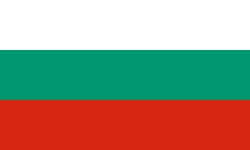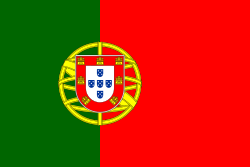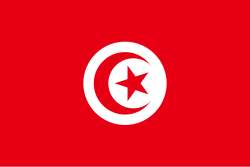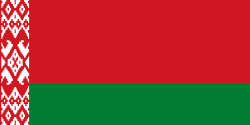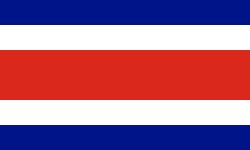Meterkonventionen
 En kopi af den første standardmeter | |
| Traktattype | Teknisk videnskabelig traktat. |
|---|---|
| Underskrevet | 20. maj 1875 |
| Underskrivelses- sted | |
| Underskrivere | Se liste i artiklen |

Tilknyttede lande i lyserødt.
Tidligere lande i grønt.
Meterkonventionen (fransk: Convention du Mètre) af 20. maj 1875 er en international teknisk videnskabelig traktat mellem en række nationer, som førte til at metersystemet blev indført. Konventionen fastlægger de grundlæggende forudsætninger for at målinger skal kunne være ensartede over hele verden. Meterkonventionen er således selve grundlaget for SI-systemet og bygger på franske forskningsstudier af meteren som ny måleenhed i slutningen af 1700-tallet. Frankrig var den første nation som tog metersystemet i brug (i praksis allerede fra 1812).
I USA lever fod og mil i bedste velgående, til trods for at USA underskrev Meterkonventionen i 1875.[1] Tilpasningen er meget kostbar og langsom. Det siges at "They approach the metric system - inch by inch".
Danmark underskrev Meterkonventionen i begyndelsen i 1875. Her bandt Danmark og de 50 andre underskrivere sig til at benytte det metriske SI-system. Nye definitioner af enheder og nye, nøjagtigere værdier af naturkonstanter vedtogs i Meterkonventionens øverste organ, Generalkonferencen (Comité International des Poids et Mesures, CIPM), som træder sammen hvert fjerde år. Under konventionen drives et udøvende organ, Bureau International des Poids et Mesures (BIPM) i Paris, med tilhørende internationalt forskningslaboratorium. BIPM har hovedkvarter i Sevres nær Paris. Det finansieres af Meterkonventionens medlemslande i fællesskab og drives under overvågning af CIPM. BIPMs mandat er at skaffe basis for et fælles målesystem verden over, sporbart til de internationale SI-enheder. Deltagerlandene i Meterkonventionen har et eller flere nationale måletekniske laboratorier, og der er indgået aftaler om gensidig anerkendelse af laboratoriernes kompetence og kalibreringsbeviser. Aftalen kaldes ”Mutual recognition arrangement” (MRA) og blev indgået i 1999.
MRA'en indebærer for deltagerne:
- De skal regelmæssigt deltage i sammenlignende målinger, ”interkompareringer” (”key-comparisons”) for at demonstrere sine kompetencer.
- Resultaterne fra interkompareringene på nøgleområder og ”bedste måleevne” offentliggøres i en database som publiceres på BIPMs hjemmeside.
- Laboratorierne skal kvalitetssikres efter ISO/IEC 17025.
Meterkonventionen har 10 ”konsultative komitéer” for forskellige fagområder.
Historiske definitioner

Den første standardmeter blev støbt i bronze i Frankrig i 1795. I 1799 blev en prototype på en meter fremstillet i platin. I 1889 blev den første internationale prototype på en meter lavet i en legering af platin og iridium.
Definitionen på "1 meter" har ændret sig igennem årene:
| År | Definition |
|---|---|
| 1791 | Den franske nationalforsamling accepterede 30. marts et forslag fra det franske videnskabsakademi om at en meter skal tilsvare en ti-milliontedel af en længdegrad (afstanden fra nordpolen til ækvator gennem Paris). |
| 1906 | 1 000 000/0,64384696 bølgelængder af den røde linje i kadmiumspektrumet i luft. |
| 1960 | 1 650 763,73 bølgelængder af ioniserende stråling produceret af et krypton-86-atom som går fra energiniveauet 2p10 til 5d5 |
| 1983 | Strækningen lys forplanter sig i vakuum i løbet af nøjagtig 1/299 792 458 sekund |
Medlemslande
| Navn | År for indtrædelse |
|---|---|
| 1877 | |
| 1947 | |
(Oprindeligt som Østrig-Ungarn) | 1875 |
| 1875 | |
| 1921 | |
| 1911 | |
| 1907 | |
| 1908 | |
| 1977 | |
| 2013 | |
| 2008 | |
(Oprindeligt som Tjekkoslovakiet) | 1922 |
| 1875 | |
| 1962 | |
| 1923 | |
| 1875 | |
(Oprindeligt som det Tyske kejserrige) | 1875 |
| 2001 | |
| 1925 | |
| 1957 | |
| 1960 | |
| 1975 | |
| 2013 | |
(Oprindeligt som den irske fristat) | 1925 |
| 1985 | |
| 1875 | |
| 1885 | |
| 2008 | |
| 2010 | |
| 2015 | |
| 2001 | |
| 1890 | |
| 2018 | |
| 1929 | |
| 1991 | |
(oprindeligt som Sverige-Norge) | 1875 |
| 1973 | |
| 1925 | |
| 1876 | |
| 1884 | |
(Oprindeligt som det Russiske imperium) | 1875 |
| 2011 | |
(Oprindeligt som Fyrstedømmet Serbien) (I 1929 som den Kongeriget Jugoslavien) (I 2001 som den Føderale Republik Jugoslavien) | 1879 |
| 1994 | |
(oprindeligt som en del af Tjekkoslovakiet) | 1922 |
| 2016 | |
| 1964 | |
| 1959 | |
| 1875 | |
(Oprindeligt som en del af Sverige-Norge) | 1875 |
| 1875 | |
| 1912 | |
| 2012 | |
(Oprindeligt som Osmannerriget) | 1875 |
| 2018 | |
| 2015 | |
| 1884 | |
| 1878 | |
| 1908 | |
| 1879 |
Tilknyttede nationer
På det 21. møde (oktober 1999) skabte CGPM en kategori benævnt "tilknyttede" for de stater som endnu ikke var fuldt gyldige medlemmer af BIPM samt for internationale sammenslutninger.[2]
| Land | Tilknyttet |
|---|---|
| 2007 | |
| 2015 | |
| 2010 | |
| 2003 | |
| 2008 | |
| 2011 | |
| 2012 | |
| 2005 | |
| 2002 | |
| 2004 | |
| 2000 | |
| 2000 | |
| 2005 | |
| 2018 | |
| 2008 | |
| 2009 | |
| 2000 | |
| 2003 | |
| 2018 | |
| 2001 | |
| 2014 | |
| 2006 | |
| 2001 | |
| 2010 | |
| 2007 | |
| 2013 | |
| 2011 | |
| 2012 | |
| 2012 | |
| 2003 | |
| 2009 | |
| 2009 | |
| 2002 | |
| 2016 | |
| 2010 | |
| 2007 | |
| 2014 | |
| 2012 | |
| 2018 | |
| 2018 | |
| 2003 | |
| 2010 | |
| 2010 |
Internationale organisationer
De følgende internationale organisationer har underskrevet CIPM MRA:[3]
| Organisation | Tilknyttet |
|---|---|
| Det Internationale Atomenergiagentur (IAEA), Wien, Østrig | 1999 |
| Institut for Referencematerialer og -målinger (IRMM), Geel, Belgien | 1999 |
| Verdens Meteorologiorganisation (WMO), Genéve, Schweiz | 2010 |
| Den Europæiske Rumorganisation (ESA), Paris, Frankrig | 2012 |
Tidligere medlemmer
De følgende lande er udtrådt af traktaten efter i en årrække ikke at have indbetalt deres medlemsafgifter eller har angivet en plan til hvordan de vil betale deres restance.[4]
| Land | Indtrådt | Udtrådt |
|---|---|---|
| 1970 | 2012[5] | |
| 1989[6] | 2012[4] | |
| 1954 | 2014[7] | |
(som tilknyttet nation) | 21. juli 2014 | 1. januar 2018[8] |
Se også
Referencer
- ^ Trygve Holtebekk (Universitetet i Oslo) og Knut Hofstad (14. februar 2009). "Meterkonvensjonen". Store norske leksikon.
- ^ BIPM official site:Procedure for a State or Economy to become an Associate of the General Conference Arkiveret 3. juli 2014 hos Wayback Machine
- ^ CIPM MRA participants. www.bipm.org, besøgt 9. maj 2024.
- ^ a b "Report of the President of the CIPM on the Work Accomplished since the 24th Meeting of the CGPM" (PDF), Sèvres: International Bureau for Weights and Measures, november 2014, s. 5.
- ^ "BIPM - Cameroun [Member State]". www.bipm.org. Hentet 20. oktober 2018.
- ^ "International Committee for Weights and Measures: 96th Meeting" (PDF), Sèvres: International Bureau for Weights and Measures, november 2007, s. 194.
- ^ "BIPM - Dominican Republic [Member State]". www.bipm.org. Hentet 20. oktober 2018.
- ^ "BIPM - Yemen [Member State]". www.bipm.org. Arkiveret fra originalen 23. august 2018. Hentet 20. oktober 2018.
Eksterne henvisninger
Medier brugt på denne side
Flag of Austria with the red in the Austrian national colours which was official ordered within the Austrian Armed Forces (Bundesheer) in the characteristic “Pantone 032 C” (since May 2018 the Red is ordered in the characteristic “Pantone 186 C”.)
Flag of Canada introduced in 1965, using Pantone colors. This design replaced the Canadian Red Ensign design.
Det er let at give dette billede en kant
Det er let at give dette billede en kant
Finlands flag
bendera Indonesia
Flag of Iran. The tricolor flag was introduced in 1906, but after the Islamic Revolution of 1979 the Arabic words 'Allahu akbar' ('God is great'), written in the Kufic script of the Qur'an and repeated 22 times, were added to the red and green strips where they border the white central strip and in the middle is the emblem of Iran (which is a stylized Persian alphabet of the Arabic word Allah ("God")).
The official ISIRI standard (translation at FotW) gives two slightly different methods of construction for the flag: a compass-and-straightedge construction used for File:Flag of Iran (official).svg, and a "simplified" construction sheet with rational numbers used for this file.
Flag of Portugal, created by Columbano Bordalo Pinheiro (1857–1929), officially adopted by Portuguese government in June 30th 1911 (in use since about November 1910). Color shades matching the RGB values officially reccomended here. (PMS values should be used for direct ink or textile; CMYK for 4-color offset printing on paper; this is an image for screen display, RGB should be used.)
The flag of Slovenia.
- "The construction sheet for the coat of arms and flag of the Republic of Slovenia
- is issued in the Official Gazette Uradni list Republike Slovenije #67, 27 October 1994
- as the addendum to the Law on the coat of arms and flag."
Used color: National flag | South African Government and Pantone Color Picker
| grøn | rendered as RGB 0 119 73 | Pantone 3415 C |
| gul | rendered as RGB 255 184 28 | Pantone 1235 C |
| rød | rendered as RGB 224 60 49 | Pantone 179 C |
| blå | rendered as RGB 0 20 137 | Pantone Reflex Blue C |
| hvid | rendered as RGB 255 255 255 | |
| sort | rendered as RGB 0 0 0 |
The national flag of Kingdom of Thailand; there are total of 3 colours:
- Red represents the blood spilt to protect Thailand’s independence and often more simply described as representing the nation.
- White represents the religion of Buddhism, the predominant religion of the nation
- Blue represents the monarchy of the nation, which is recognised as the centre of Thai hearts.
Flag of Albania
Flag of Ethiopia
Flag of Jamaica. “The sunshine, the land is green, and the people are strong and bold” is the symbolism of the colours of the flag. GOLD represents the natural wealth and beauty of sunlight; GREEN represents hope and agricultural resources; BLACK represents the strength and creativity of the people. The original symbolism, however, was "Hardships there are, but the land is green, and the sun shineth", where BLACK represented the hardships being faced.
Flag of Namibia
Flag of Syria (2024-present) and the Syria Revolution
The flag of the Dominican Republic has a centered white cross that extends to the edges. This emblem is similar to the flag design and shows a bible, a cross of gold and 6 Dominican flags. There are branches of olive and palm around the shield and above on the ribbon is the motto "Dios,Patria!, Libertad" ("God, Country, Freedom") and to amiable freedom. The blue is said to stand for liberty, red for the fire and blood of the independence struggle and the white cross symbolized that God has not forgotten his people. "Republica Dominicana". The Dominican flag was designed by Juan Pablo Duarte, father of the national Independence of Dominican Republic. The first dominican flag was sewn by a young lady named Concepción Bona, who lived across the street of El Baluarte, monument where the patriots gathered to fight for the independence, the night of February 27th, 1844. Concepción Bona was helped by her first cousin María de Jesús Pina.
Forfatter/Opretter: Getsnoopy, Licens: CC BY-SA 4.0
World map of countries that are signatories to the Metre Convention as on 5 September 2022.[1]
Forfatter/Opretter: Ken Eckert, Licens: CC BY-SA 4.0
Copy of the first metre standard, sealed in the foundation of a building, 36 rue de Vaugirard, Paris
Computer generated image of International Prototype Metre bar, made of 90% platinum - 10% iridium alloy. This was the standard of length for the SI (Metric system) from 1889 until 1960, when the SI system changed to a new definition of length based on the wavelength of light emitted by krypton 86. The length of the metre was defined by the distance between two fine lines ruled on the central rib of the bar near the ends, at the temperature of freezing water. The bar was given an X (Tresca) cross-sectional shape to increase its stiffness-to-weight ratio, improve its thermal accommodation time, and so the graduation lines could be located on the "neutral" axis of the bar where the change in length with flexure is minimum. The prototype was made in 1889, its length made equal to the previous French standard "Metre of the Archives". Twenty-nine identical copies were made at the same time, which were calibrated against the prototype and distributed to nations to serve as national standards.
The main problem with defining the unit of length by an artifact such as a bar is that there is no foolproof way of detecting a change in its length due to age or misuse. It can be compared to other copies, but these themselves may have changed in length. This motivated the 1960 change to a definition based on light waves. The bar is now kept in the collection of the BIPM museum.






